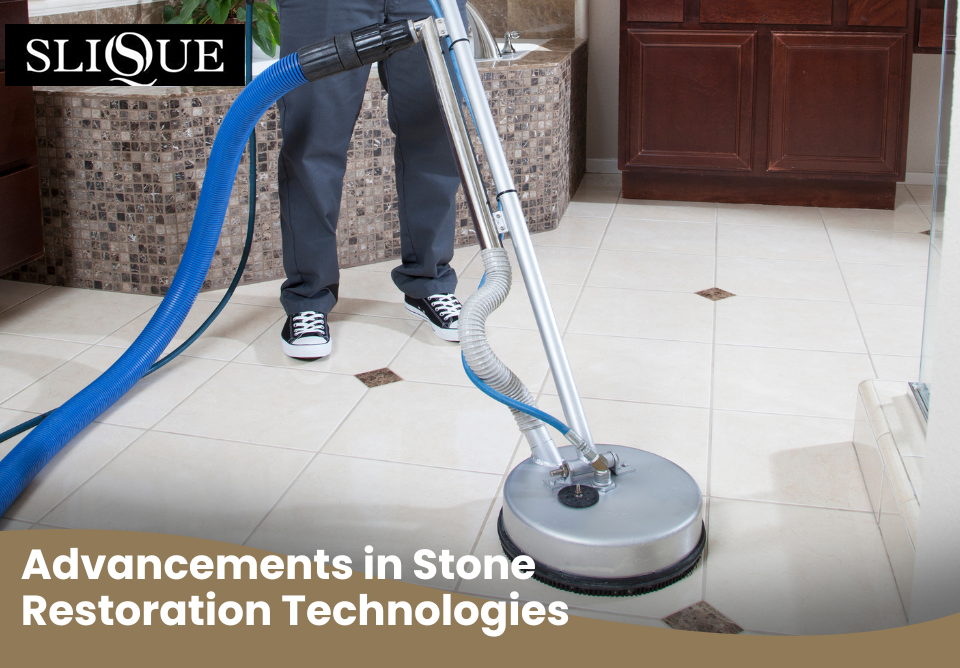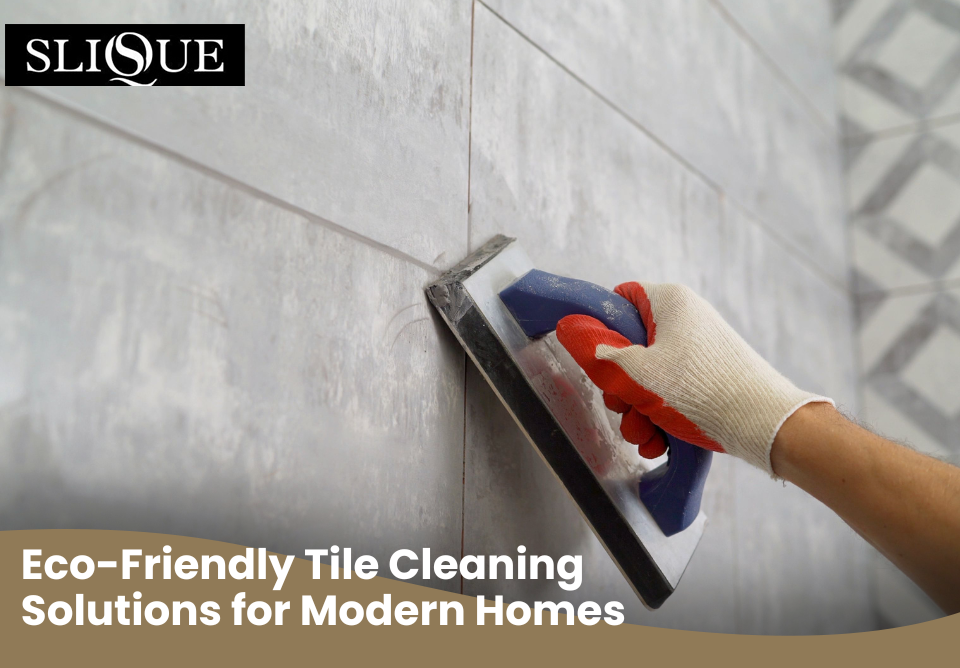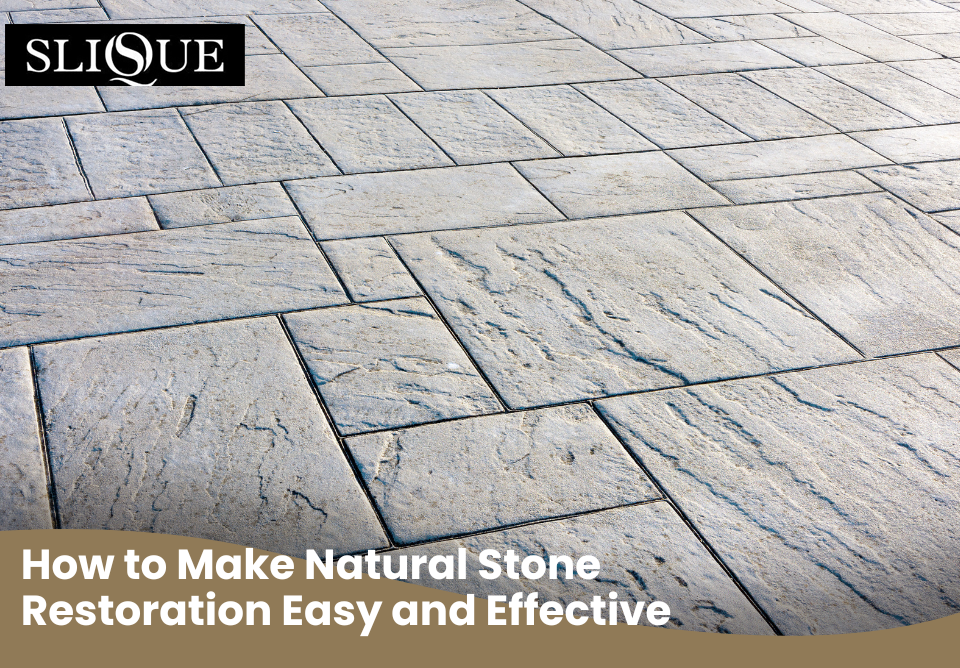Expert-Approved Tile Cleaning Tips for Lasting Shine
Expert-Approved Tile Cleaning Tips for Lasting Shine

Clean, shiny tiles make a space feel fresh. They reflect light, resist grime and lift the whole look of a room. But tiles don’t stay spotless on their own. Daily wear, spills and soap scum build up over time. Even with regular cleaning, that glossy finish can fade fast without the right care.
This isn’t about scrubbing harder or using fancy products. It’s about knowing what works and what to avoid. A few small changes can help your floors, walls or splashbacks keep their shine longer — without damage or wasted effort.
Working with expert tile cleaning methods helps make sense of it all. The key is a simple, steady approach that fits the tile type and the way the space is used.
Use the Right Products and Tools
Tile is durable, but it still needs the right support. Harsh chemicals or the wrong mop can dull the surface or break down grout. So it’s worth starting with a good set of tools and cleaners that are made for tiles — not just general floors.
Go for pH-neutral cleaners. These are safe for most tile types and don’t leave residue. Pair that with a soft mop or microfibre cloth. Hard brushes or abrasive pads can scratch tiles or wear away the finish.
Add a soft grout brush for corners and lines. A spray bottle helps with spot cleaning, and a bucket is best for mixing water and cleaner. That’s really all you need for most jobs.
If you’re not sure what to buy, this list of expert-recommended tile cleaning products and tools outlines what works best across different tile surfaces.
The right gear doesn’t just make the job easier — it helps prevent long-term damage too.
Build a Routine That Works
Tiles don’t need cleaning every day, but regular care keeps dirt from settling in. Waiting too long between cleans can make stains harder to remove and dull the finish faster.
Set a simple schedule:
- Sweep or vacuum daily to remove grit
- Mop with a safe cleaner once or twice a week
- Clean grout every month
- Do a deep clean every few months
High-use areas like kitchens or entryways might need more attention. In bathrooms, water and soap leave build-up. A quick wipe-down after each shower can stop that build-up from turning into a tough stain.
Routine keeps things manageable. A few minutes each day saves hours later. And if you’re serious about mastering tile cleaning like a pro, keeping this rhythm is where to start.
Skip These Common Mistakes
Cleaning seems simple, but it’s easy to make mistakes that do more harm than good. Even small habits can wear down the surface or cause stains to set.
Watch out for:
- Using vinegar or bleach on porous tiles
- Mopping with dirty water
- Letting water sit without drying
- Scrubbing with hard brushes on glazed surfaces
- Using too much cleaner without rinsing
It’s also common to overlook grout or focus too much on the tiles themselves. Grout holds dirt, mould and moisture. Neglecting it leads to discolouration and even tile damage.
Being aware of common tile cleaning mistakes to avoid can help keep your tiles in top shape without risking damage or wasted effort.
Match the Method to the Tile Type
Not all tiles clean the same way. What works on one surface might ruin another. Knowing the material you’re dealing with is half the battle.
Ceramic and porcelain are strong and low-maintenance. Glazed finishes resist water and stains. You can mop them regularly without much worry. Just avoid rough pads.
Natural stone like marble, slate or travertine needs a gentler touch. These are porous and can absorb moisture or react to acids. Always use cleaners made for stone and avoid vinegar, lemon or standard floor cleaners.
Glass tiles tend to show fingerprints and streaks. Use a soft cloth and gentle spray cleaner. Wipe in circular motions to keep them clear and shiny.
Matching the method to the material helps protect the surface and gives better results. If you’re unsure, test a small spot first.
Pay Attention to Grout
Grout holds everything together — but it also holds onto dirt. Over time it absorbs moisture, traps soap and starts to discolour. Even if your tiles look clean, dirty grout can make the whole area look worn out.
Start by brushing grout lines with a mix of baking soda and water. Let it sit, then scrub gently. Rinse well and dry. For tougher stains, use a grout-specific cleaner. Always check that it won’t damage the surrounding tiles.
Once clean, apply a grout sealer. This stops moisture and grime from soaking in. It also helps maintain that clean look longer between scrubs.
Fresh, sealed grout makes a big difference — especially in bathrooms and kitchens where water is constant.
Don’t Forget to Dry
One of the easiest ways to stop tiles from losing their shine is by drying them after cleaning. Water spots, soap residue and streaks all come from letting moisture sit too long.
Use a clean microfibre cloth or towel to wipe down tiles after mopping. In bathrooms, a quick swipe with a squeegee after each use can prevent soap build-up and keep things looking fresh.
Drying also helps grout stay strong. Wet grout is more likely to stain, soften or grow mould. A few minutes spent drying after each clean makes a big difference over time.
Look for Signs of Wear Early
Tiles are strong, but they do wear out. Catching issues early helps avoid major repairs. If you notice dull patches, stains that won’t lift or grout that keeps darkening, it could be time for a deeper clean or reseal.
In some cases, professional help is the best option. Tile restoration can strip off old residue, polish the surface and reseal grout to make things look new again.
Take the case of a family-run café in Brisbane. Their kitchen tiles had gone dull from heavy foot traffic and daily cleaning. They tried everything, but the shine never came back. A professional team stepped in, removed the build-up, resealed the surface and restored the original gloss. The difference was obvious — and long-lasting.
Knowing when to switch from basic cleaning to restoration can save time, effort and even money in the long run.
Try Eco-Friendly Options
More homes are moving away from harsh cleaners and looking for safer, sustainable options. Tile cleaning doesn’t need strong chemicals to work. You can get great results with simple ingredients.
Try these natural solutions:
- Baking soda for grout
- Castile soap for general cleaning
- White vinegar (only on non-porous tiles)
- Lemon juice and water for glass
- Steam cleaning for sanitising without chemicals
Reusable microfibre cloths and mop heads also cut down on waste. Just make sure to rinse them well and let them dry between uses.
Going green is safer for families, better for tiles and good for the environment. It’s also easier than you might think.
FAQs
1) What’s the best way to clean tile floors without damaging them?
The safest method starts with sweeping or vacuuming to remove dirt and grit. Follow with a mop and a pH-neutral cleaner that won’t harm tile or grout. Avoid harsh chemicals like bleach or ammonia, especially on natural stone. Use a soft mop, not a sponge mop, which can push dirt into grout lines. Rinse with clean water to remove residue. Always dry the surface to prevent streaks. If you’re dealing with older or worn tiles, avoid abrasive pads. For deep stains, use a targeted cleaner suited to your tile type and test a small area first. Cleaning this way protects the finish and helps floors keep their shine.
2) How can I make my tiles shiny again?
Start with a good clean using a safe tile cleaner. Remove surface dirt, then focus on grout. Often, dullness comes from build-up, not the tile itself. If the surface still looks flat after cleaning, check if the glaze or sealant is worn. In some cases, polishing products made for tiles can bring back the shine. Be careful with natural stone, though — you’ll need a stone-specific polish or a professional touch. If tiles stay dull despite cleaning, restoration may be needed to strip old layers and reseal the surface. That’s often the only way to bring back a like-new finish.
3) Can I use vinegar to clean all tile types?
No. While vinegar works well on ceramic and porcelain tiles, it’s not safe for natural stone like marble, travertine or limestone. The acid in vinegar can eat into the surface and cause dull spots or etching. It’s also risky for certain grout types, especially if they’re old or unsealed. On safe surfaces, vinegar can lift soap scum and water spots. Always dilute it and test a small area first. For general cleaning, pH-neutral cleaners are a safer choice. They clean effectively without the risks. If in doubt, stick to products labelled as safe for your tile type.
4) How often should I seal tile and grout?
It depends on the material and how much use the area gets. Most grout needs sealing once a year, especially in bathrooms or kitchens. Some high-quality sealers can last longer, but moisture and cleaning frequency affect durability. Natural stone tiles should also be sealed every 1–2 years. Sealing helps block stains, stops mould and keeps the surface looking fresh. You’ll know it’s time when water stops beading on the surface or grout starts darkening fast. Always clean thoroughly before sealing and follow the product directions closely. Regular sealing makes ongoing maintenance much easier.
5) What are signs that my tiles need professional restoration?
If tiles still look dull after cleaning, or stains won’t come off with regular methods, that’s a sign restoration may help. Other clues include cracking grout, loose tiles, discolouration or water marks that don’t fade. In some cases, sealants wear off and allow grime to soak in deeper. If cleaning takes more effort but shows less result, professional help can bring the surface back to life. Restoration isn’t just about looks — it can protect the surface and extend the tile’s life. It also helps when selling a home or preparing a rental property between tenants.
Keep the Shine Going
Shiny tiles aren’t just about first impressions — they reflect the care you put into your space. Keeping them that way takes more than a quick wipe. It means knowing what to use, what to avoid and how to spot problems early.
Smart tile care doesn’t have to be hard. With the right habits, products and routine, you can keep tiles looking fresh year-round — whether they’re in the bathroom, kitchen or hallway.
For expert-level results and long-term surface health, visit Slique and explore how the right methods can transform your space.
For all your natural stone floor cleaning and polishing needs in Sydney, please call SLIQUE today on 02 9648 0395, or leave an enquiry.





